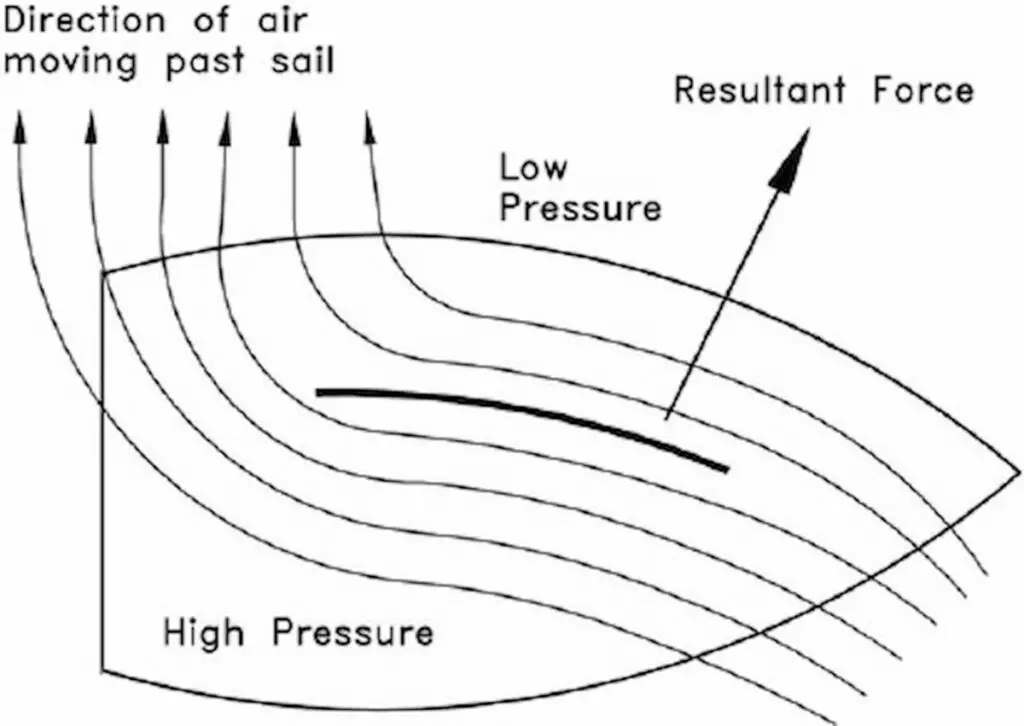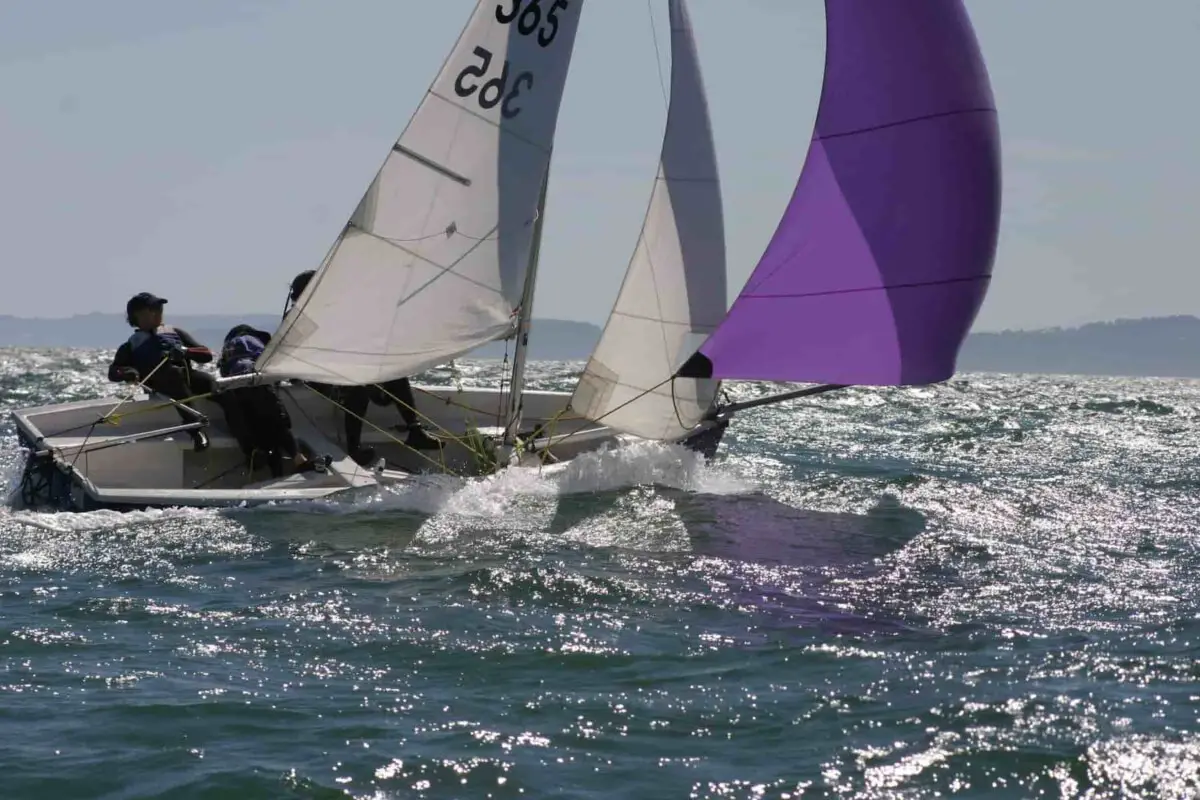Sailing is a fascinating and timeless method of transportation that harnesses the power of wind to propel a vessel through the water. In this article, we will explore the science behind how sails work and the principles of sailing, as well as delve into the various types of sails, modern innovations, and techniques to improve efficiency.
The Basic Principles of Sailing
To understand how sails work, we must first familiarize ourselves with the basic principles of sailing. These foundational concepts involve wind behavior, sail shape and design, and the role of a boat’s structure, particularly its keel, in maintaining stability and balance.
Understanding Wind and Its Effects on Sails

Wind is the driving force behind sailing. The interaction between wind and sails is what propels a sailboat through the water. When wind blows on a sail, it creates areas of high and low pressure on either side of the sail, as well as generates lift and drag forces that propel the boat forward.
However, the direction of the wind plays a crucial role in the efficiency of a sailing vessel. Sailing directly upwind is impossible due to the limitations of sail design and physics. Instead, sailors must utilize a technique called “tacking” to move in a zigzag pattern toward their upwind destination.
The Importance of Sail Shape and Design
The shape and design of a sail play an essential role in determining a sailboat’s efficiency and speed. A properly designed sail is not flat but curved, allowing it to take advantage of the wind’s power and direct it in a way that propels the boat forward.
When wind flows over the sail’s convex side, it accelerates, creating an area of low pressure. Conversely, the wind travels slower over the sail’s concave side, creating an area of high pressure. The resulting pressure difference generates lift, similar to the principle behind an airplane wing, pushing the sailboat forward.
The Role of the Keel/centerboard in Sailing
A sailboat’s keel/ centerboard plays an essential role in its stability and directional control. Located under the boat’s hull, the keel is designed to counteract the forces pushing the vessel sideways, allowing the boat to move forward more effectively. It also provides stability, preventing the sailboat from capsizing when subjected to strong wind forces.
The Physics of Sailing
Several physical concepts provide the foundation for understanding how sails work, including the Bernoulli principle, the Coanda effect, and the Magnus effect. Masters of these principles can optimize their sailing for maximal efficiency and speed.
Lift, Drag, and the Bernoulli Principle
The Bernoulli principle states that as the speed of a fluid (in this case, air) increases, its pressure decreases. The curved design of a sail takes advantage of this concept, generating lift that propels the sailboat forward. However, along with lift comes an opposing force called “drag,” which acts to slow down the vessel. Optimizing the balance between lift and drag is essential for efficient and fast sailing.
The Coanda Effect and Sail Curvature
The Coanda effect is the tendency of a fluid to follow a curved surface. This principle is vital for understanding how sail curvature harnesses the wind’s power. By curving the sail, we force the wind to travel a longer path over one side of the sail, causing the pressure difference that leads to lift.
The Magnus Effect and Rotating Sails
The Magnus effect occurs when a rotating object interacts with a fluid’s flow, generating a force perpendicular to the fluid’s motion. Some advanced sailing vessels utilize rotating sails, which take advantage of the Magnus effect for additional lift and propulsion. The rotational motion of these sail designs can significantly improve a boat’s performance and speed.
Different Types of Sails and Their Functions
There are various types of sails, each designed to optimize a specific function or aspect of sailing. Understanding the purpose and role of each sail type is crucial for efficient sailing.
Mainsails and Jibs: The Backbone of Sailing
The mainsail and jib are the most fundamental sails on any sailboat. The mainsail, typically the largest sail, is rigged to the mast and boom, while the jib is a smaller, triangular sail that attaches to the forestay.
Together, these sails provide the primary propulsion for a sailboat, and their trim and positioning are critical for effectively harnessing the wind’s power.
Spinnakers and Gennakers: Maximizing Downwind Performance
Spinnakers and gennakers are specialized sails designed specifically for sailing downwind. These large, lightweight sails capture the wind’s power and provide maximum propulsion when sailing with the wind direction. Despite their performance advantages, they can be challenging to handle and often require additional crew members or expertise.
Storm Sails: Sailing Safely in Heavy Weather
When sailing in heavy weather, storm sails provide a safe means of maintaining control and stability. These smaller, sturdier sails are designed to handle high winds and rough conditions, allowing the sailor to navigate through adverse weather with minimal risk to the boat and crew.
Modern Innovations in Sail Technology
New advancements in sail design and technology have led to exciting developments that push the boundaries of sailing performance and efficiency.
Wing Sails and the America’s Cup
Wing sails, inspired by airplane wing design, have revolutionized the world of high-performance sailing. These solid, wing-shaped sails provide exceptional control and have become increasingly popular, particularly in the competitive environment of the America’s Cup.
Solar Sails: Harnessing the Power of the Sun
Solar sails are an innovative concept that uses solar radiation pressure to propel a spacecraft through space. While not yet practical for waterborne vessels, this breakthrough technology has the potential to change the face of interplanetary exploration, utilizing the power of the sun as an unlimited fuel source.
Smart Sails: Integrating Sensors and Automation
Some modern sail designs include integrated sensors and automated systems that optimize sail trim and positioning for maximum performance. These “smart sails” offer the potential to improve sailing efficiency and make the sport more accessible to those with limited knowledge or experience.
Tips for Efficient Sailing
Whether you’re a seasoned sailor or a newcomer, understanding the science behind sails makes for a more efficient and enjoyable experience. Here are some tips to help you get the most out of your sailing adventures.
Reading the Wind and Adjusting Your Sails
Learning to “read” the wind is an essential skill for any sailor. Observe the water’s surface, wind indicators, and flags for visual cues to the wind direction and strength. Adjust your sails accordingly to ensure that they are capturing and directing the wind’s power most efficiently.
Sail Trim Techniques for Optimal Performance
Proper sail trim ensures your sails generate maximum lift with minimal drag. Adjusting the position, tension, and angle of your sails based on wind conditions and boat’s heading can significantly improve performance. Practice and experience are critical to mastering the art of sail trim.
The Art of Tacking and Jibing
Tacking and jibing are essential maneuvers for altering your course, particularly when sailing upwind or downwind. Though they may seem daunting at first, becoming proficient in these techniques is crucial for precise navigation and efficient sailing. Practice and patience will help you become a skilled sailor, adept at handling any wind condition and propelling your boat to new, exciting destinations.
